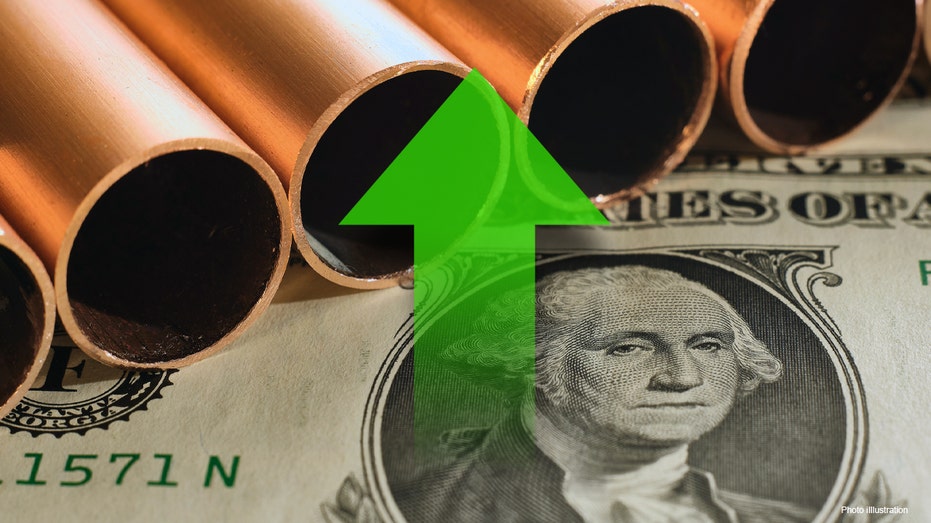Few Places To Hide: Analyzing The Effects Of Trump's Tariffs On Canadian Consumers

Table of Contents
Increased Prices on Everyday Goods
Trump's tariffs led to a noticeable increase in the prices of everyday goods for Canadian consumers. This wasn't limited to a single sector; the impact rippled across various industries.
Impact on Specific Sectors
The increased costs were felt most acutely in sectors heavily reliant on US imports or raw materials.
- Lumber: The price of lumber increased by an estimated 20-30% in certain regions, directly impacting the construction industry and housing costs. This increase was largely attributed to US tariffs on Canadian softwood lumber.
- Steel and Aluminum: Tariffs on steel and aluminum imports resulted in higher prices for Canadian manufacturers relying on these materials, impacting the automotive and construction sectors among others. The price increases ranged from 10% to 25% depending on the specific product.
- Automobiles: Increased tariffs on auto parts and vehicles resulted in higher prices for consumers, reducing the affordability of new and used cars for many Canadians. The impact was felt particularly hard by those purchasing larger vehicles or luxury models.
This resulted in a significant decrease in affordability and consumer purchasing power, forcing many to reconsider major purchases.
The Ripple Effect
The price increases in key sectors had a cascading effect throughout the Canadian economy.
- Increased lumber costs led to higher housing prices, making homeownership less accessible for many.
- Higher steel and aluminum prices increased the cost of manufacturing various goods, resulting in higher prices for consumers across numerous product categories.
- The impact was particularly severe for lower-income households, who faced a disproportionate burden from these price increases, further exacerbating existing inequalities.
Reduced Consumer Spending and Economic Slowdown
Trump's tariffs and the resulting price increases directly affected Canadian consumer confidence and spending habits.
Decreased Consumer Confidence
The uncertainty created by the tariff war led to a decline in consumer confidence.
- Statistical data from the Conference Board of Canada showed a noticeable dip in consumer confidence indices following the imposition of tariffs.
- Consumer spending growth slowed down significantly, impacting various sectors, particularly retail sales and durable goods.
- The overall impact contributed to a slower rate of GDP growth for the Canadian economy during the period of tariff imposition.
Job Losses and Business Closures
Reduced consumer spending inevitably impacted Canadian businesses.
- Businesses in sectors directly affected by higher input costs faced reduced profitability and were forced to cut costs, leading to potential job losses.
- Small and medium-sized enterprises (SMEs), often lacking the resources to absorb price shocks, were particularly vulnerable to business closures.
- The automotive and construction sectors, heavily reliant on imported materials, experienced some job losses and reduced investment in new projects.
Adaptation Strategies Employed by Canadian Consumers
Faced with higher prices, Canadian consumers employed various strategies to adapt.
Shifting Consumption Patterns
Consumers adopted several measures to cope with increased costs.
- Many consumers switched to cheaper brands or generic alternatives to reduce their spending.
- Consumers actively sought out discounts and sales, delaying purchases until prices were more favorable.
- The demand for second-hand goods increased as consumers sought more affordable options.
Increased Support for Domestic Goods
The "Buy Canadian" movement gained momentum as consumers sought to support local businesses and reduce reliance on imported goods.
- Consumers increasingly favored Canadian-made products, boosting the demand for domestically produced goods and services.
- Government campaigns promoting domestic goods and services further amplified this trend.
- This shift towards domestic consumption helped to mitigate some of the negative impacts of the tariffs, supporting the Canadian economy.
Conclusion
Trump's tariffs had a significant and multifaceted impact on Canadian consumers, leading to increased prices on everyday goods, reduced consumer spending, and a slowdown in economic growth. The effects were felt across various sectors, disproportionately impacting lower-income households. However, Canadian consumers demonstrated resilience by adapting their consumption patterns and increasing their support for domestic products. Understanding the long-term effects of trade policies like Trump's tariffs is crucial for consumers and policymakers alike. Further research into the economic consequences of protectionist measures is needed to mitigate similar impacts in the future. To learn more about the lasting impacts of Trump's tariffs on the Canadian economy and how to navigate future economic uncertainty, continue exploring resources on international trade and economic policy.

Featured Posts
-
 Tongling Metals Forecasts Short Term Copper Market Impact From Us Tariffs
Apr 23, 2025
Tongling Metals Forecasts Short Term Copper Market Impact From Us Tariffs
Apr 23, 2025 -
 Ai And Wildlife Conservation Benefits And Challenges
Apr 23, 2025
Ai And Wildlife Conservation Benefits And Challenges
Apr 23, 2025 -
 Protesta Di 200 Persone Contro La Distruzione Delle Vetrine Dei Ristoranti Palestinesi
Apr 23, 2025
Protesta Di 200 Persone Contro La Distruzione Delle Vetrine Dei Ristoranti Palestinesi
Apr 23, 2025 -
 Brewers Historic Rout Of Athletics
Apr 23, 2025
Brewers Historic Rout Of Athletics
Apr 23, 2025 -
 Athletics 3 1 Victory Over Brewers A Detailed Match Summary
Apr 23, 2025
Athletics 3 1 Victory Over Brewers A Detailed Match Summary
Apr 23, 2025
